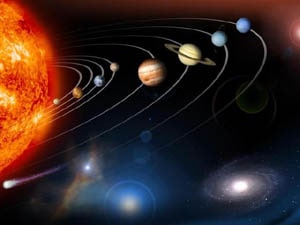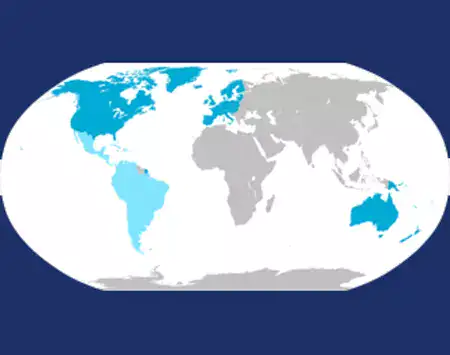English Documentary on Solar System with Transcript with illustrated flashcards and an embedded podcast for IELTS & TOEFL candidates to practice listening, reading and vocabulary
Source of documentary: National Geographic YouTube Channel
The formation of the solar system
Our solar system is one of over 500 known solar systems in the entire Milky Way galaxy. The solar system came into being about 4.5 billion years ago, when a cloud of interstellar gas and dust collapsed, resulting in a solar nebula, a swirling disc of material that collided to form the solar system.
The solar system is located in the Milky Way’s Orion star cluster. Only 15% of stars in the galaxy host planetary systems and one of the stars is our own sun.
Planets in our solar system
Revolving around the sun are eight planets. The planets are divided into two categories based on their composition: Terrestrial and Jovian.
Terrestrial planets
Terrestrial planets, including Mercury, Venus, Earth and Mars, are primarily made of rocky material. Their surfaces are solid. They do not have ring systems. They have very few or no moons and they are relatively small.
The smallest and closest to the sun is Mercury, which has the shortest orbit in the solar system at about three Earth months.
Venus is the hottest planet with temperatures of up to 867 degrees Fahrenheit due to an atmosphere of carbon dioxide and extensive lava flows.
Next to this world of fire is a world of water, Earth. The water systems on this planet help create the only known environment in the universe capable of sustaining life.
The last of the terrestrial planets, Mars, might have also supported life about 3.7 billion years ago when the planet had a watery surface and moist atmosphere.
Jovian planets
Beyond the four Terrestrial planets of the inner solar system lie the Jovian planets of the outer solar system. The Jovian planets include gas giants, Jupiter and Saturn, and ice giants, Uranus and Neptune. The gas giants are predominantly made of helium and hydrogen, and the ice giants also contain rock, ice and a liquid mixture of water, methane and ammonia.
All four Jovian planets have multiple moons, support ring systems, have no solid surface and are immense.
Gas giants
The largest Jovian is also the largest planet in the solar system, Jupiter. Nearby is Saturn, the solar system’s second largest planet. Its signature rings are wide enough to fit between Earth and the moon but are barely a kilometer thick.
Ice giants
Past Saturn are the ice giants, Uranus and Neptune. The slightly bigger of these ice giants, Uranus, is famous for rotating on its side. Next to Uranus is Neptune, the outermost planet in the solar system and also one of the coldest.
Asteroid Belt
Orbiting the Terrestrial planets is the asteroid belt, a flat disc of rocky objects full of remnants from the solar system’s formation, from microscopic dust particles to the largest known object the dwarf planet, Ceres.
Kuiper Belt
Another disc of space debris lies much further out, and orbits the Jovian planets, the icy Kuiper Belt. Apart from asteroids, the Kuiper Belt is also home to dwarf planets, such as Pluto and is the birthplace of many comets.
Oort Cloud
Beyond the Kuiper belt is the Oort Cloud, a vast spherical collection of icy debris. It is considered the edge of the solar system since that is where the gravitational and physical influences of the sun end.
Our solar system’s particular configuration of planets and other celestial objects, all revolving around a life-giving star, make it a special place to call home.




Solar system is very important for humanity because just a little distraction between the planets make bad ending for us and the solar system.
That’s right, Soroosh. You’re referring to an extremely important point in our solar system, which is order in the entire system.
Although the space is too ample which makes it terrifying to many people, it’s so unique that it has such regulation and rhythm simultaneously.
The universe where we live is incredibly amazing! Any twinkling star observable at night could be another sun with its own planetary system, and our galaxy, that is the Milky Way, is technically made of nearly 100 billion stars.
◾ The formation of the solar system
Our solar system is one of over 500 known solar systems in the entire Milky way galaxy. The solar system came into being about 4.5 billion years ago. When a cloud of interstellar gas and dust collapsed resulting in a solar nebula, a swirling disc of material that collided to form the solar system.
The solar system is located in the Milky way’s Orion star cluster. Only 15% of stars in the galaxy host planetary systems and one of the stars is our own sun.
◾ Planets in our solar system
Revolving around the sun are eight planets. The planets are divided into two categories based on the composition, Terrestrial and Jovian.
• Terrestrial planets
Terrestrial planets including Mercury, Venus, Earth and Mars are primarily made of rocky material. Their surfaces are solid. They do not have ring systems. They have very few or no moons and they are relatively small.
The smallest and closest to the sun is Mercury, which has the shortest orbit in the solar system at about three Earth months.
Venus is the hottest planet with temperatures of up to 867 degrees Fahrenheit due to an atmosphere of carbon dioxide and extensive lava flows.
Next to this world of fire is a world of water, Earth. The water systems on this planet help create the only known environment in the universe capable of sustaining life.
The last of the terrestrial planets, Mars might have also supported life about 3.7 billion years ago when the planet had a watery surface and moist atmosphere.
• Jovian planets
Beyond the four Terrestrial planets of the inner solar system lie the Jovian planets of the outer solar system. The Jovian planets include gas giants Jupiter and Saturn and ice giants Uranus and Neptune. The gas giants are predominantly made of helium and hydrogen, and the ice giants also contain rock, ice and a liquid mixture of water, methane and ammonia. All four Jovian planets have multiple moons, sport ring systems, have no solid surface and are immense.
The largest Jovian is also the largest planet in the solar system, Jupiter. Nearby is Saturn, the solar system’s second largest planet. Its signature rings are wide enough to fit between Earth and the moon but are barely a kilometer thick.
Past Saturn are the ice giants, Uranus and Neptune. The slightly bigger of these ice giants, Uranus is famous for rotating on its side. Next to Uranus is Neptune, the outermost planet in the solar system and also one of the coldest.
◾ Planets orbiting
Orbiting the Terrestrial planets is the asteroid belt. A flat disc of rocky objects full of remnants from the solar system’s formation. From microscopic dust particles to the largest known object the dwarf planet, Ceres.
Another disc of space debris lies much further out, and orbit the Jovian planets, the icy Kuiper belt.
Apart from asteroids, the Kuiper belt is also home to dwarf planets such as Pluto and is the birthplace of many comets. Beyond the Kuiper belt is the Oort cloud, a vast spherical collection of icy debris. It is considered the edge of the solar system since that is where the gravitational and physical influences of the sun end.
Our solar system’s particular configuration of planets and other celestial objects all revolving around a life-giving star, make it special place to call home.
Thank you very much indeed for your wonderful job, which was also relatively long, i.e. over 4 minutes. The following are my comments, though:
* You had some minor punctuation and capitalization mistakes.
* sport ring systems –> support ring systems. The subtitle is also incorrect; however, it doesn’t make sense.
* Kuiper belt –> Kuiper Belt